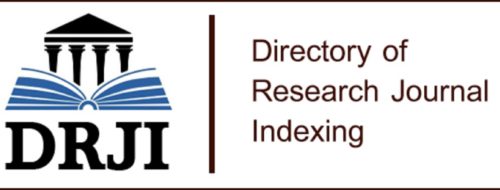OBTAINING FUELS FROM THE PYROLYSIS OF RECYCLED HIGH-DENSITY POLYETHYLENE PLASTIC MATERIAL (HDPE)
Keywords:
Fuels, environment, pyrolysis, high density polyethylene, plasticAbstract
Currently, the excessive increase of plastic waste represents an environmental problem, which, due to its low biodegradability, pollutes ecosystems and accelerates global warming. On the other hand, the planet's economy revolves around fossil fuels; however, to obtain this type of fuels, a series of processes must be carried out that lead to environmental deterioration, such as production areas in which soil, air and water are polluted. With this background, the objective of this research work is to obtain fuels from recycled plastic material of high density polyethylene (HDPE), as a mechanism to reduce the levels of volumetric contamination of plastic waste in the environment, leading to a new alternative for obtaining fuels by determining each of the compounds of the pyrolysis process. Therefore, in this experimental research work, the method of obtaining fuels from high density polyethylene (HDPE) was analyzed, using a thermal reaction called pyrolysis for a period of 2 hours. The process consisted of breaking the molecular structure of the plastic compound under temperature conditions at 380 ºC and constant pressure in the absence of oxygen, giving way to lighter compounds known as hydrocarbons, obtaining favorable results such as a yield of 45.565%, gasoline percentages of 7.315%, kerosene 32.901% and diesel 20.126%.
Keywords: Fuels, environment, pyrolysis, high density polyethylene, plastic.
References
Arandes, J. M., Bilbao, J., & Valerio, D. L. (2004). Reciclado de residuos plásticos. 5.
Arce, J., & Suárez, S. (2017). Obtención y caracterización de combustible a partir de desechos termoplásticos PEBD (low density polyethylene) recolectados en la Universidad de Guayaquil.
Calderón Sáenz, F. (2016). La Producción de Combustibles Vehiculares a partir de Plásticos de Deshecho. 1–226. http://www.cynarplc.com
Crespo, S. (2013). Evaluación de la pirólisis térmica de residuos de polietileno proveniente de la producción de banano en un reactor batch. 1–127. https://bibdigital.epn.edu.ec/bitstream/15000/6661/4/CD-5053.pdf
Dadson, J., Pandam, S., & Asiedu, N. (2018). Modeling the characteristics and quantification of adulterants in gasoline using FTIR spectroscopy and chemometric calibrations. Cogent chemistry, 4(1), 1482637. https://doi.org/10.1080/23312009.2018.1482637
Espinoza, J., & Naranjo, T. (2014). Estudio de la viabilidad técnica preliminar para la obtención de combustibles mediante la pirólisis de residuos plásticos generados en la Universidad Politécnica Salesiana.
Instituto de Educación Superior Agustín Espinosa. (2014). Tecnologías I.
Instituto Ecuatoriano de Normalización. (2012). Norma Técnica Ecuatoriana NTE INEN 2634:2012, (2012).
Instituto Ecuatoriano de Normalización. (2013). Norma Técnica Ecuatoriana NTE INEN 923:2013, materiales bituminosos. Determinación de la densidad por el método del picnómetro. http://www.epa.gov/mercury/faq.htm
Instituto Ecuatoriano de Normalización. (2019). NTE INEN. (2019). Productos derivados del petróleo. https://studylib.es/doc/8136269/nte-inen-2319--productos-derivados-del-petróleo.-determin.
Lojano, F. (2020). Obtención de combustibles a partir de tereftalato de polietileno (PET) a escala de laboratorio mediante procesos de pirólisis y gasificación.
Mancheno, M., Astudillo, S., Arévalo, P., Malo, I., Naranjo, T., & Espinoza, J. (2016). Aprovechamiento energético de residuos plásticos obteniendo combustibles líquidos, por medio del proceso de pirólisis. La Granja, 23(1). https://doi.org/10.17163/LGR.N23.2016.06
Ministerio de Educación de Argentina. (2011). Guía didáctica: Polímeros.
Moreira, L., Azevedo, D., & D’Avila, L. (2003). Automotive gasoline quality analysis by gas chromatography: study of adulteration. chromatography. https://www.osti.gov/etdeweb/biblio/20437311
Rejas, L., Carreón, B., Ortiz, M., Llanes, L., & Copa, M. (2015). Generación de combustibles Líquidos a partir de residuos plásticos. Revista Ciencia, Tecnología e Innovación, 10(11), 635-642. http://www.scielo.org.bo/scielo.php?script=sci_arttext&pid=S2225-87872015000100005
Skrobot, V. L., Castro, E. V. R., Pereira, R. C. C., Pasa, V. M. D., & Fortes, I. C. P. (2007). Use of Principal Component Analysis (PCA) and Linear Discriminant Analysis (LDA) in Gas Chromatographic (GC) Data in the Investigation of Gasoline Adulteration. Energy and Fuels, 21(6), 3394–3400. https://doi.org/10.1021/EF0701337
Published
How to Cite
Issue
Section
License
Copyright (c) 2023 Scientific Journal INGENIAR: Engineering, Technology and Research

This work is licensed under a Creative Commons Attribution-NonCommercial-ShareAlike 4.0 International License.

















